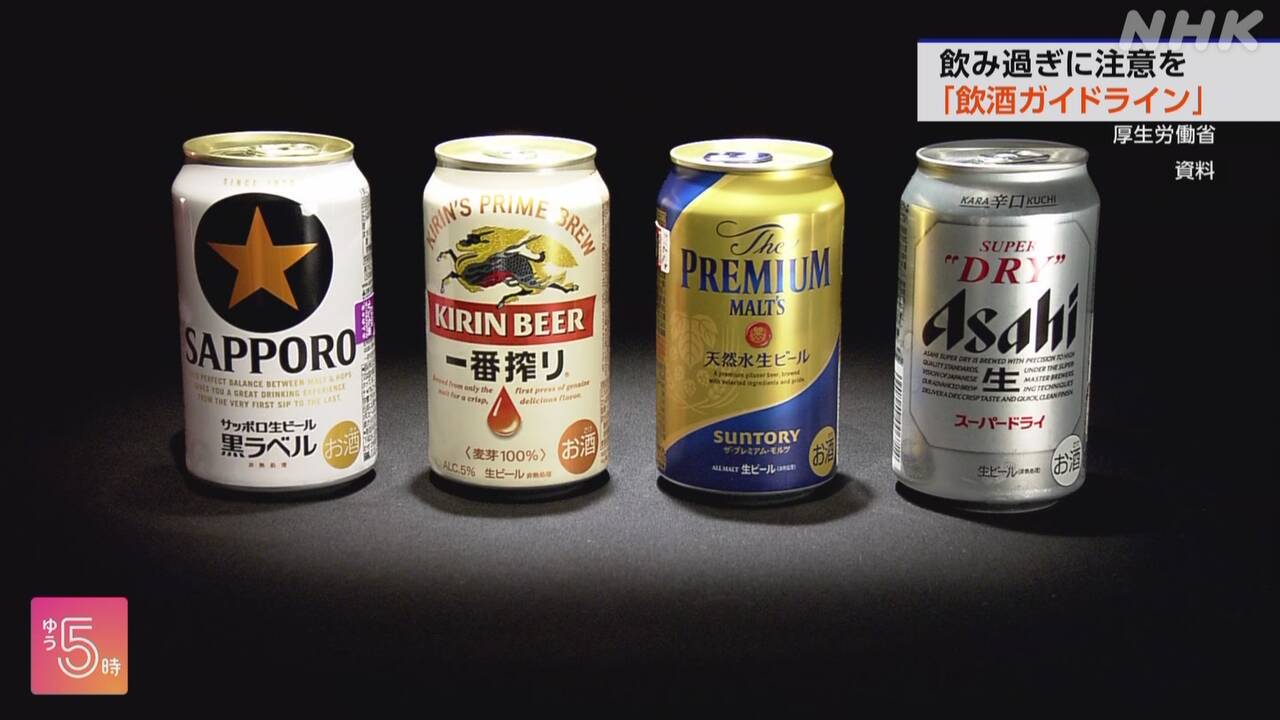To help determine the appropriate amount of alcohol to drink, the Ministry of Health, Labor and Welfare has compiled ``Drinking Guidelines'' that indicate the health risks associated with the amount of alcohol contained in alcoholic beverages.
In Japan, it is common to measure the amount of alcohol consumed by the alcohol content or how many drinks you have had, but the Ministry of Health, Labor and Welfare has determined that the amount of alcohol contained in alcohol, or ``pure alcohol content,'' indicates the health risks. "Drinking Guidelines" have been compiled.
The amount of pure alcohol can be calculated by multiplying the amount of alcohol consumed by the alcohol content.
For example, if you drink a medium bottle of beer with an alcohol content of 5% (500ml), the pure alcohol content will be 20g.
According to the guidelines, the amount of alcohol consumed that increases the risk of lifestyle-related diseases is defined as 40 grams or more of "pure alcohol" per day for men and 20 grams or more for women according to the national basic plan. The goal is to reduce the percentage of people who do this.
The guidelines also summarize the amount of alcohol consumed that increases the risk of developing each disease.
The risk of developing colon cancer increases if you consume more than 20 grams of pure alcohol per day, and if you consume even a small amount of high blood pressure, it is recommended that you reduce the amount of alcohol you drink depending on your constitution.
Other health-friendly ways to drink include ``determining the amount you drink in advance,'' ``Eating before drinking and drinking water between drinks so that the alcohol is absorbed slowly,'' and ``Drinking alcohol within a week.'' It is important to be careful about things such as "setting aside days when you don't do it."
Through this guideline, the Ministry of Health, Labor and Welfare hopes to popularize the use of ``pure alcohol content'' as an indicator of the appropriate amount of alcohol consumed.

